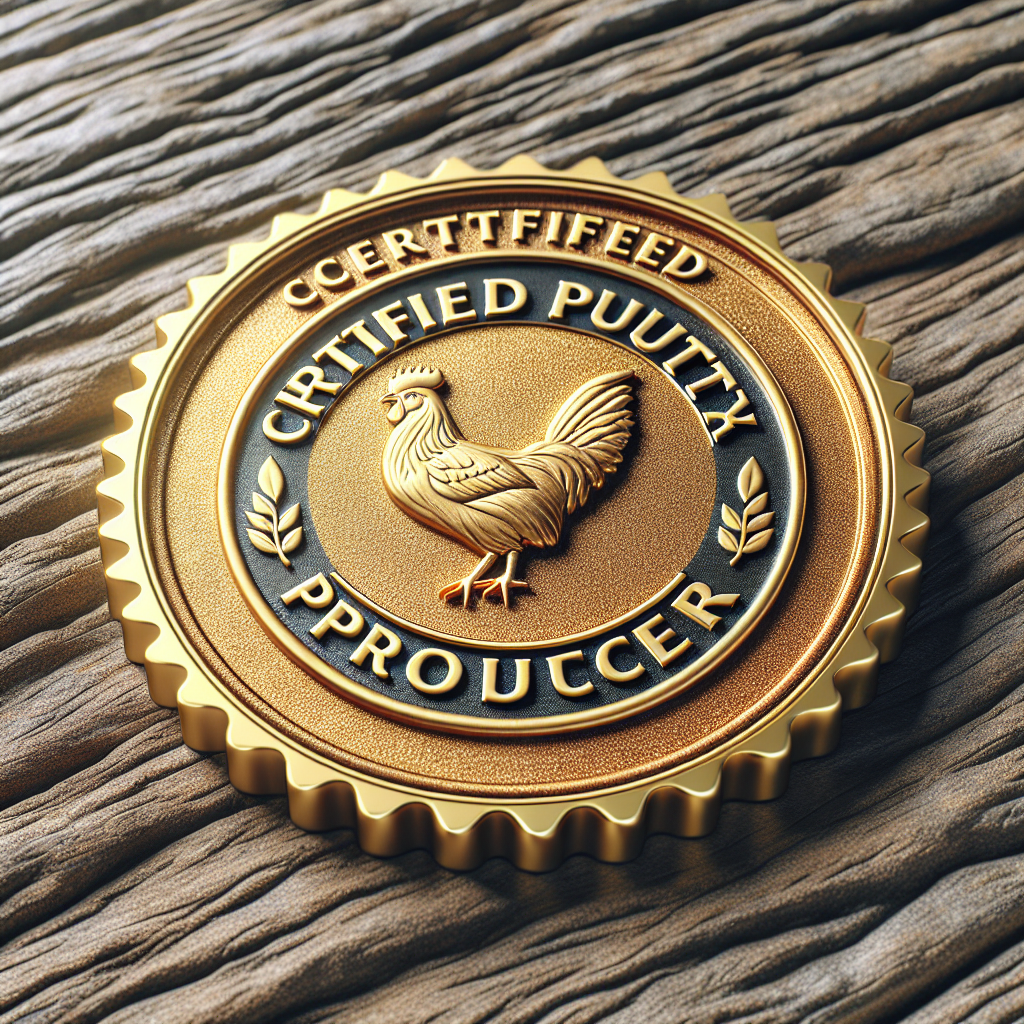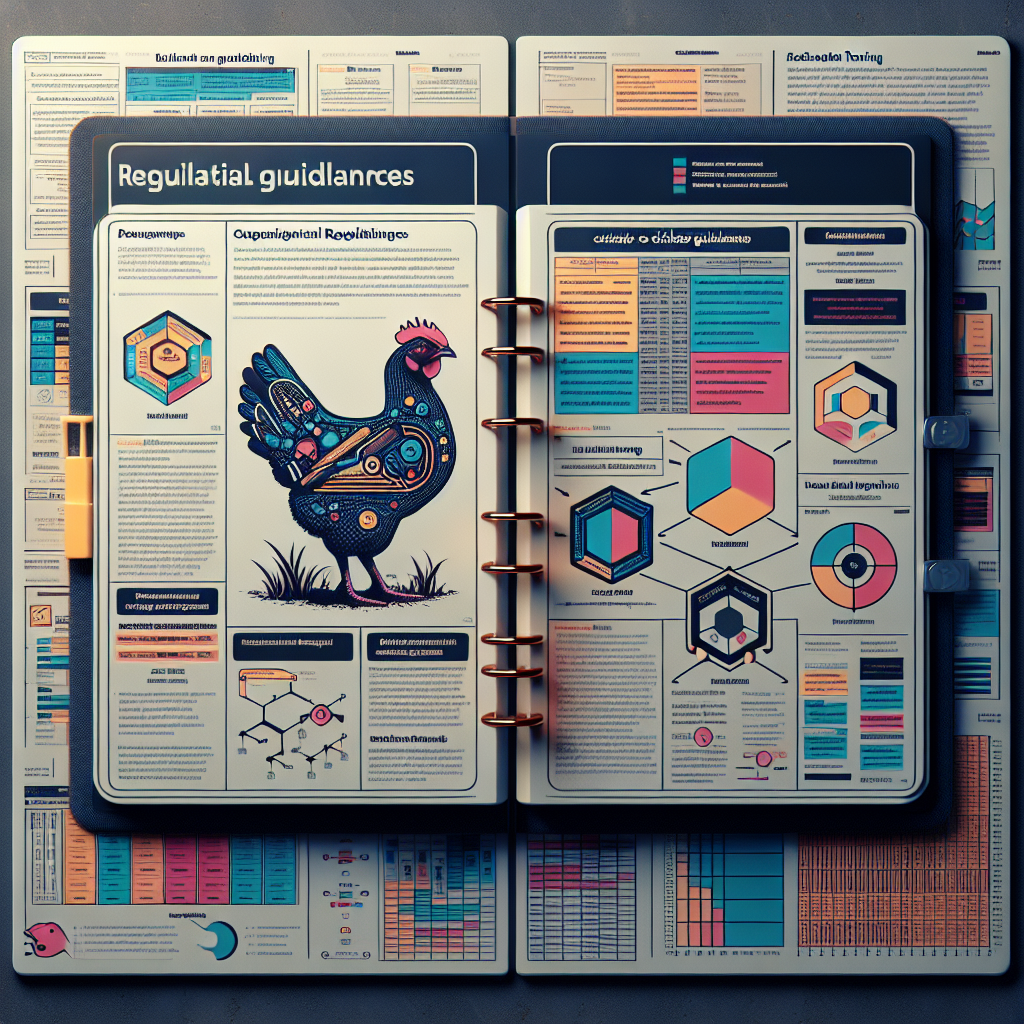Have you ever wondered how regulations affect the transportation of chickens, particularly when it comes to crossing state or country borders? These regulations play a vital role in ensuring the welfare of the birds and maintaining biosecurity standards. In this article, we’ll explore how these regulations impact the transport of chickens, shedding light on the various measures put in place to protect both the animals and the industry. Get ready to discover the fascinating world of chicken transportation regulations and their impact on our feathered friends.
Regulations Governing the Transport of Chickens
Overview of Regulations
Regulations governing the transport of chickens are in place to ensure the safety, welfare, and biosecurity of these animals during transit. These regulations are set by government agencies and outline specific requirements and protocols that transporters must follow to minimize the risk of disease spread, maintain animal welfare, and comply with international and interstate standards.
Government Agencies Involved
Multiple government agencies are involved in regulating the transport of chickens. In the United States, these agencies include the United States Department of Agriculture (USDA) and the Animal and Plant Health Inspection Service (APHIS). Internationally, bodies such as the World Organization for Animal Health (OIE) set guidelines and standards for the transportation of animals across borders.
Purpose of Regulations
The primary purpose of regulations governing the transport of chickens is to safeguard the health and well-being of the animals. Chickens are susceptible to stress, injury, and disease during transport, so regulations aim to minimize these risks. Additionally, regulations help prevent the spread of pathogens, ensuring biosecurity and protecting both animal and public health.
Specific Requirements for Transport Vehicles
Regulations outline specific requirements for transport vehicles used to transport chickens. These requirements typically include provisions for adequate ventilation, appropriate flooring, and sufficient space to ensure the comfort and welfare of the animals. Transport vehicles must also be designed to minimize injury and disease transmission, providing partitions and restraints to prevent overcrowding and the risk of physical harm.
Transport Documentation and Reporting
Transporters of chickens are typically required to maintain documentation and report various aspects of the transportation process. This documentation may include details such as the number of chickens transported, the origin and destination of the shipment, and the duration and conditions of transport. This information allows regulators to track and monitor the movement of chickens, ensuring compliance with regulations and enabling investigation of any incidents or violations.
Biosecurity Measures
Biosecurity Protocols
Biosecurity protocols are a crucial aspect of regulations governing the transport of chickens. These protocols aim to prevent the introduction and spread of diseases among chicken populations, farm environments, and other animals. Measures can include disinfection procedures, quarantine protocols, and restricted access to transportation areas.
Preventing Disease Spread
Regulations emphasize the importance of preventing the spread of diseases during chicken transportation. This involves minimizing contact between chickens from different sources, implementing proper sanitation procedures, and ensuring strict adherence to biosecurity measures at all stages of the transport process. It is vital to prevent the transmission of pathogens that could harm the chickens, other animals, or humans.
Monitoring and Inspections
Monitoring and inspections play a crucial role in ensuring compliance with regulations and detecting any potential issues during chicken transport. Transport vehicles, facilities, and chickens themselves may be subject to inspections to verify adherence to biosecurity protocols, health standards, and animal welfare regulations. These monitoring efforts help identify and address any areas of non-compliance or potential risks before they can cause harm.
Impacts on Animal Welfare
Transport Duration and Conditions
Regulations governing the transport of chickens recognize the potential welfare implications of transport duration and conditions. Guidelines may specify maximum travel times or minimum rest periods to prevent excessive stress and injury to the animals. By limiting transport times and ensuring appropriate conditions, regulators aim to minimize discomfort and promote overall welfare.
Temperature and Ventilation Requirements
Maintaining appropriate temperature and ventilation is critical for the welfare of chickens during transport. Regulations often include specific requirements regarding temperature control systems, ventilation rates, and monitoring devices to ensure adequate airflow and thermal comfort. These provisions help protect chickens from heat stress, suffocation, and other temperature-related issues.
Handling and Loading Practices
Proper handling and loading practices are crucial for minimizing stress and injury to chickens during transport. Regulations may provide guidelines on the proper techniques for catching and handling chickens, ensuring gentle treatment and minimizing the risk of physical harm. Additionally, loading procedures must follow specified protocols to prevent overcrowding, leading to discomfort and injury.
In-Transit Care
Regulations also address the provision of in-transit care for chickens. Transporters have a responsibility to monitor and provide essential care during transportation, including access to water and appropriate feed, as well as addressing any health or welfare issues that may arise. By mandating in-transit care, regulations aim to ensure the animals’ well-being throughout the transportation process.
Implications for Animal Health and Stress
Transporting chickens can have significant implications for their health and stress levels. Regulations recognize the potential risks associated with transport and aim to mitigate these issues to the best extent possible. By implementing protocols for biosecurity, travel conditions, and handling practices, regulators seek to minimize stress-related health problems and overall distress experienced by the animals.
Crossing State or Country Borders
Interstate Regulations
Transporting chickens across state borders within a country requires compliance with specific interstate regulations. These regulations may vary between states, but they commonly address issues such as health certificates, disease testing, and biosecurity protocols. Transporters must be aware of and adhere to the requirements of each state involved in the transit, ensuring the safety and health of the chickens as they cross borders.
International Regulations
Crossing country borders with chickens involves complying with international regulations. These regulations can differ significantly depending on the countries involved, reflecting varying biosecurity standards, disease concerns, and animal welfare priorities. Transporters must navigate the specific requirements of each country, ensuring compliance with import/export permits, health certificates, and other necessary documentation.
Differences in Regulatory Requirements
Navigating the differences in regulatory requirements between states or countries can be challenging for transporters. Regulations may not be harmonized, resulting in variations in permitted travel durations, documentation requirements, disease testing protocols, and other specifications. Staying informed and understanding these differences is crucial for successfully transporting chickens across borders while ensuring compliance with all applicable regulations.
Challenges and Compliance
Transporter Training and Certification
Meeting regulatory requirements for chicken transport often necessitates specialized training and certification for transport professionals. Training programs may cover topics such as animal handling and welfare, disease prevention, biosecurity protocols, and compliance with relevant regulations. By ensuring that transporters are adequately trained, regulations aim to enhance compliance and reduce the risk of animal welfare issues and disease outbreaks.
Costs and Economic Impact
Complying with regulations can have economic implications for those involved in chicken transportation. Implementing the necessary infrastructure, equipment, and practices to meet regulatory standards may require significant investments. Transporters may also face additional costs associated with training, inspections, and obtaining necessary permits and documentation. Balancing these costs while still maintaining profitability presents an ongoing challenge for industry stakeholders.
Enforcement and Penalties
Enforcement of regulations governing the transport of chickens is crucial to ensure compliance and deter non-compliant behavior. Government agencies responsible for oversight may conduct regular inspections, respond to complaints, and take appropriate action against violators. Penalties for non-compliance can include fines, license suspensions, or other disciplinary measures. The effective enforcement of regulations sends a message that non-compliance will not be tolerated, promoting industry-wide compliance.
Public Perception and Consumer Views
Regulations governing the transport of chickens not only impact industry stakeholders but also influence public perception and consumer views. The public is increasingly concerned about animal welfare, biosecurity, and the ethical treatment of animals. Compliance with animal transport regulations helps maintain consumer confidence, promote positive perceptions of the industry, and safeguard public health. Failing to meet regulations can lead to reputational damage and consumer backlash.
Case Studies of Compliance Issues
Recent Violations and Incidents
Various incidents and violations related to chicken transport have shed light on the importance of compliance with regulations. Recent examples include cases of overcrowded transportation vehicles, failure to provide adequate ventilation, and instances of inadequate in-transit care. These incidents highlight the need for continued vigilance and enforcement to prevent lapses in compliance and protect animal welfare.
Legal Consequences and Lawsuits
Non-compliance with regulations governing the transport of chickens can lead to legal consequences and lawsuits. When transporters fail to meet the required standards, they may face legal action from government agencies, animal welfare organizations, or impacted stakeholders. Lawsuits can result in financial penalties, loss of licenses, and damage to a transporter’s reputation. The legal ramifications of non-compliance serve as a deterrent and underscore the importance of adherence to regulations.
Industry Response and Improvements
Instances of non-compliance and subsequent legal action often prompt the industry to respond and enact improvements. Recognizing the importance of compliance with regulations, industry stakeholders may revise their practices, invest in better equipment, and enhance training and certification programs. Improvements can include technological advancements, such as temperature monitoring systems, to ensure better compliance and overall animal welfare.
Regulatory Updates and Future Considerations
Proposed Changes and Revisions
Regulatory agencies responsible for governing the transport of chickens continually evaluate and propose changes to existing regulations. These proposed changes and revisions aim to address emerging challenges, incorporate advancements in technology and scientific understanding, and improve overall animal welfare and biosecurity. Stakeholders, including transporters, are often invited to provide input, ensuring a collaborative approach to regulatory updates.
Evolving Industry Standards
As regulations evolve, so do industry standards for chicken transport. Industry associations, transporters, and other stakeholders work to establish best practices that go beyond minimum regulatory requirements. These evolving standards focus on optimizing animal welfare, biosecurity, and transportation efficiency, setting the bar higher for industry performance and promoting continuous improvement.
Advancements in Animal Welfare Technology
Advancements in technology offer new opportunities to enhance animal welfare during chicken transport. Innovations in temperature monitoring, ventilation systems, and tracking devices enable transporters to ensure optimal conditions for the animals and respond quickly to any issues that may arise. Regulatory agencies take into account these advancements and may incorporate them into updated guidelines and requirements.
Collaboration with Stakeholders
The regulation of chicken transport necessitates collaboration among various stakeholders. Government agencies, industry associations, transporters, and animal welfare organizations work together to establish, enforce, and improve regulations. By fostering collaboration, regulators ensure that multiple perspectives are considered, promoting effective regulation that enhances both animal welfare and industry sustainability.
In conclusion, regulations play a vital role in governing the transport of chickens, particularly across state or country borders. These regulations aim to ensure the welfare of chickens, prevent the spread of diseases, and maintain biosecurity measures. They address specific requirements for transport vehicles, documentation, and reporting. Compliance with these regulations can be challenging, but it is essential for transporter training, economic impact, enforcement, and meeting consumer expectations. Recent case studies highlight the consequences of non-compliance, leading to legal action and industry improvements. Regulatory updates, evolving industry standards, advancements in animal welfare technology, and collaboration with stakeholders drive continual improvements in the transport of chickens, promoting animal welfare and biosecurity for a sustainable industry.




